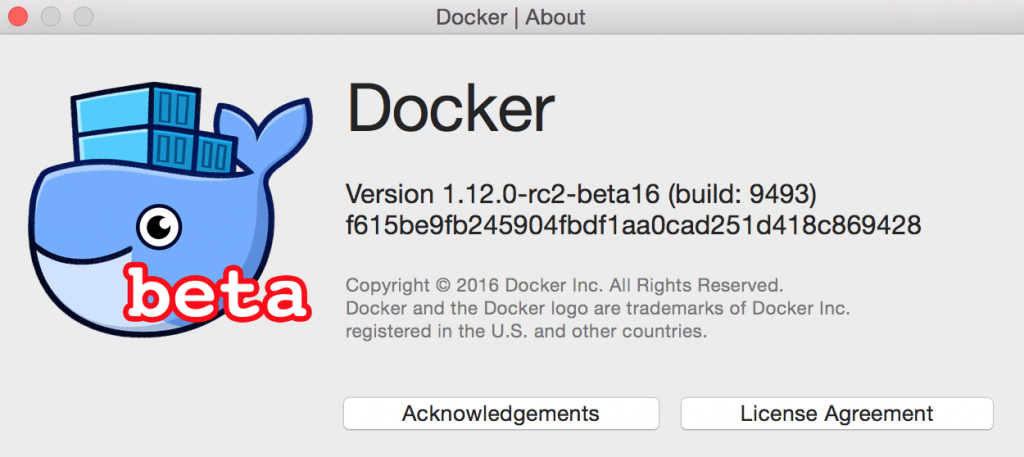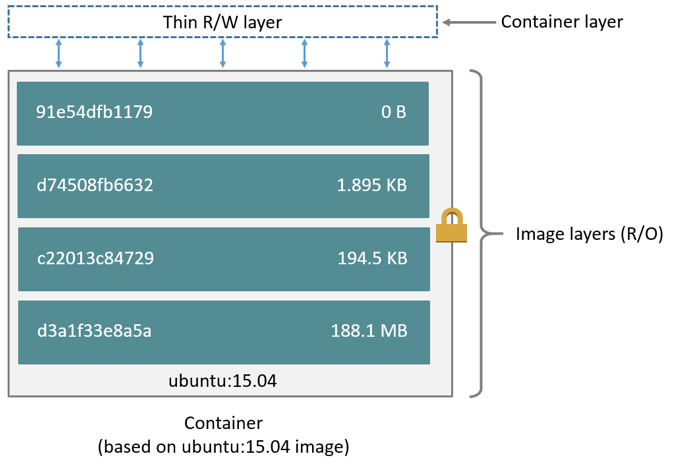
- #Docker for mac cannot connect to container how to#
- #Docker for mac cannot connect to container install#
- #Docker for mac cannot connect to container drivers#
#Docker for mac cannot connect to container drivers#
Installing NVIDIA drivers from the command line.Installing NVIDIA drivers on Ubuntu guide.NVIDIA's official toolkit documentation.Here are some resources that you might find useful to configure the GPU on your base machine. The exact commands you will run will vary based on these parameters. As previously mentioned, this can be difficult given the plethora of distribution of operating systems, NVIDIA GPUs, and NVIDIA GPU drivers.
#Docker for mac cannot connect to container install#
You must first install NVIDIA GPU drivers on your base machine before you can utilize the GPU in Docker. First, Make Sure Your Base Machine Has GPU Drivers In any case, if you have any errors that look like the above, you have found the right place here. You may receive many other errors indicating that your Docker container cannot access the machine's GPU. tensorflow cannot access GPU in Docker RuntimeError: cuda runtime error (100) : no CUDA-capable device is detected at /pytorch/aten/src/THC/THCGeneral.cpp:50 pytorch cannot access GPU in Docker The TensorFlow library wasn't compiled to use FMA instructions, but these are available on your machine and could speed up CPU computations. I tensorflow/core/common_runtime/gpu/gpu_:81] No GPU devices available on machine. docker: Error response from daemon: Container command 'nvidia-smi' not found or does not exist.Įrror: Docker does not find Nvidia drivers I tensorflow/stream_executor/cuda/cuda_:150] kernel reported version is: 352.93 When you attempt to run your container that needs the GPU in Docker, you might receive any of the following errors.

It is called the NVIDIA Container Toolkit! Nvidia Container Toolkit ( Citation) Potential Errors in Docker Luckily, you have found the solution explained here. Certain things like the CPU drivers are pre-configured for you, but the GPU is not configured when you run a docker container. To add another layer of difficulty, when Docker starts a container - it starts from almost scratch. The configuration steps change based on your machine's operating system and the kind of NVIDIA GPU that your machine has. In addition it can automatically set-up a secure registry on Kubernetes, which will be the topic of a later post.In this post, we walk through the steps required to access your machine's GPU within a Docker container.Ĭonfiguring the GPU on your machine can be immensely difficult. The registry tool also has options to retrieve the certificate from a URL or a Kubernetes secret. (out)Adding certificate to local machine. reg-tool.sh install-cert -cert-file ca.crt -reg-name test-docker-reg:5000 -add-host 192.168.1.103 test-docker-reg A simple way to do this is to add an entry to /etc/hosts< e.g:Īnd now you should be able to push and pull to the registry:ĭocker tag alpine:latest test-docker-reg:5000/test-imageĭocker push test-docker-reg:5000/test-imageĪs there's some non-obvious steps here, and it's a common problem, I've written a tool to do this as a one-liner on Linux or Mac: You'll need to restart Docker for Mac for the change to take effect.Īfter this, on both Linux and Mac, you will probably need to make the registry address resolvable (if you're using a self-signed cert it probably means it's running on an internal network without a public domain name). Sudo security add-trusted-cert -d -r trustRoot -k /Library/Keychains/System.keychain ca.crt The correct solution (thanks to Justin Cormack) is to add the certificate to the Mac's keychain, which will be picked up by Docker for Mac e.g: The above solution doesn't work, as Docker for Mac relies on a internal VM whose filesystem gets wiped on restarts. With the Mac, however, things are a little different.

Sudo cp ca.crt /etc/docker/certs.d/test-docker-reg\:5000/ Sudo mkdir /etc/docker/certs.d/test-docker-reg\:5000


#Docker for mac cannot connect to container how to#
This post will look into some of the issues around accessing registries with self-signed certificates from clients, including Docker for Mac.ĭistributing certificates to Linux Docker clients is pretty straightforward, as it just means copying the certificate to the correct directory (for the purposes of this post, I'm assuming you know how to create a self-signed cert for the registry): If your registry isn't running on a public domain, you're probably using a self-signed certificate for this purpose. When running a registry, it's essential to make sure your clients can access it easily and securely. The Docker registry image has over 10 million pulls on Docker Hub, so it's safe to say that a lot of people out there are making use of it.


 0 kommentar(er)
0 kommentar(er)
